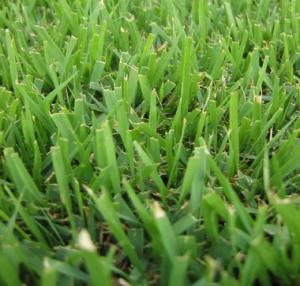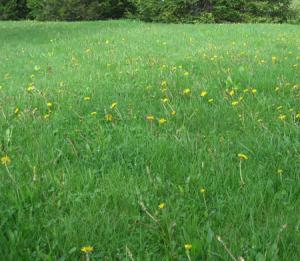 Although Bermuda grass seems to be the choice of new home builders in the Lewisville area, it really isn't the best choice of grasses when we consider water usage. Bermuda grass is a notorious water hog. It requires quite a bit of watering to keep it from thinning out and turning brown. If your neighborhood association doesn't require Bermuda grass, there is a fantastic alternative native grass – buffalo grass.
Although Bermuda grass seems to be the choice of new home builders in the Lewisville area, it really isn't the best choice of grasses when we consider water usage. Bermuda grass is a notorious water hog. It requires quite a bit of watering to keep it from thinning out and turning brown. If your neighborhood association doesn't require Bermuda grass, there is a fantastic alternative native grass – buffalo grass.
Buffalo grass is drought resistant, disease tolerate, insect resistant and widely available in low profile varieties. It used to be shunned as a lawn grass because of its thin growth habits but newer strains retain all of the good characteristics while creating a much more compact growing habit. This new buffalo grass is usually comprised of three to five cultivars in a single mix.
The use of Buffalo grass in Lewisville is not common as of yet, but we do expect to see it start to become a greater presence as people realize the potential for water savings. Buffalo grass needs about half an inch of water per week to survive. This is less than half of what is needed for a standard lawn grass and almost a third of what is necessary for Kentucky bluegrass.
Adjusting your sprinkler system will be in order if you change out your grass, as overwatering will actually cause the buffalo grass to die back.
 Buffalo grass goes dormant in the cold temperatures of late fall and perks back up in the mid march warmth. During its dormant period, the grass takes on a yellow or tan hue which is still quite attractive.
Buffalo grass goes dormant in the cold temperatures of late fall and perks back up in the mid march warmth. During its dormant period, the grass takes on a yellow or tan hue which is still quite attractive.
To speed its growth, a dosage of nitrogen fertilizer can be used at the beginning of spring and then again during mid-summer. Over fertilizing your lawn will result in leggy growth and a tendency for the grass to thin out.
Mowing buffalo grass is quite easy, although it will require that you keep your blades sharpened as the strands are quite strong. The commercially available mix will grow to between 6 and 8 inches tall if left unattended and does very well when cut back to 2 to 3 inches in height. During the summer, buffalo grass only needs to be mowed once every two to three weeks. Overall, it is a great alternative choice to the Kentucky bluegrass that is so common throughout the area.